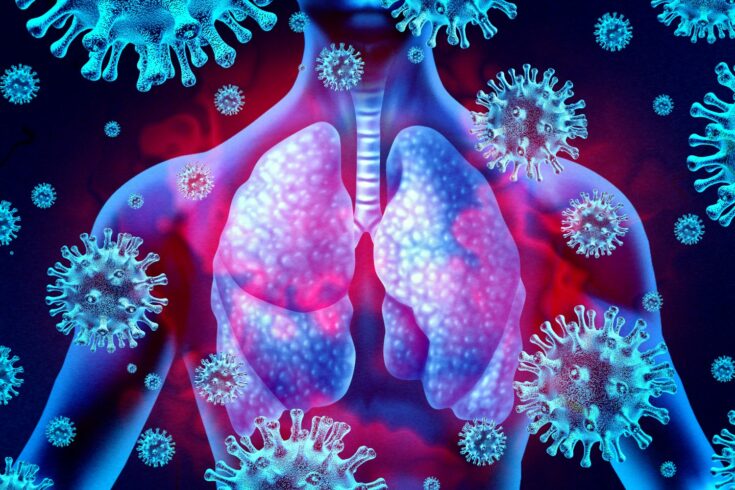It is rare that I read something or hear commentary that feels like a punch in the gut. But that was the case recently after seeing videos on YouTube studies that presented vivid and credible signs of the damage that the mRNA vaccine, developed and promoted in the West to fight Covid-19, can wreak on the human body. They offer overwhelming evidence that the vaccine, while effective against Covid, exacerbates other conditions to the extent that overall mortality rises. In other words, the vaccine has actually cost more lives than it has saved. Below are the links to those videos, which I think should be viewed by anyone considering getting the vaccine for themselves and especially for their children.
I was led to these studies initially after listening to a YouTube commentary by John Campbell, a retired British physiologist. I actually had first become aware of Campbell’s work from his YouTube talk about vitamin D. Campbell, whose YouTube channel has 2.8 million subscribers, impressed me as extremely well informed, unassuming, and caring. Maybe I’m biased in that I share his view of the pharmaceutical industry as being far more motivated by money than by a drive to find effective drugs. Campbell backs up his work with peer-reviewed articles, sometimes complemented by interviews. In the case of vitamin D, he clearly was delighted to be able to point to a major study that made a powerful case for this everyday supplement as a highly effective medicine. After reviewing his strong recommendation to take vitamin D as a strong protectant against many health risks, I raised my own daily dosage and also started taking K2, which enables vitamin D to carry calcium to the bones. My past familiarity with Campbell as a credible source, with no ax to grind, made me open to following up on his discussion of the mRNA vaccines in the studies linked above.
The Unnecessary Death of Millions Worldwide
It goes without saying that the implicit findings that the vaccines actually have caused illness and deaths – and possibly worldwide millions – will be strongly denied. What’s particularly disheartening is the possibility – indeed, the likelihood – that this wasn’t a matter primarily of ignorance but rather stemmed from a willful disregard of the public good stemming from greed, the desire for money, a sign of the corruption that is occurring at the highest levels of corporate and governmental life. No matter how strong the evidence, there will be propaganda denying it. I’d be surprised if Campbell’s work hasn’t been met with unmitigated denials and ad hominem attacks by the Western mainstream media. In the case of the photographic evidence of blood clots that is displayed, there will be cries about the lack of integrity of everyone involved and absence of evidence that the photos represent what they claim to.
That’s why you need to do your own research. After all, my judgment about Campbell could be wrong – I have no firsthand knowledge of his motivations. As for the research he cites that is detailed in the videos linked above, which in particular point to the work of a German scientist Arne Burkhardt, I knew nothing about Burkhardt and the other scientists involved other than Campbell’s comments about their credibility.
It is easy enough, via Google Scholar, to verify Campbell’s comments about Burkhardt. But something that Campbell didn’t know at the time he presented Burkhardt’s evidence is that Burkhardt died shortly after he presented his paper at a conference. He was 79 years old, and it seems clear that he had come out of retirement because he was concerned that there were problems with some of the Covid vaccines and that it was urgent to investigate. Other German scientists had already presented evidence that the mRNA vaccines, which involved a technique that had never been used before, were a threat to life. Multiple reports of illness and death following use of the vaccine, and the appearance of long Covid, all suggested this vaccine was unlike any other, and not in a positive way. It seems likely that if someone comes out of retirement to go back to work – and the fact that Burkhardt died so soon after completing his Covid research suggests he may not have been in great health – he must have a compelling reason, and that would not be to produce a bunch of nonsense and misinformation.
The Truth About mRNA Vaccine’s Deadly Side Effects
I devoted a fair amount of time trying to understand how the mRNA vaccine operates in the human body – how a vaccine designed to save lives could itself be a threat to life. The mRNA vaccines were developed very quickly, which meant some basic tests weren’t done, and involved a technique that hadn’t been used before. Vaccines involve making a virus or a unique protein essential to a virus, known as an antigen. In the case of the new mRNA vaccine, it employed a different technique that rather than delivering the virus itself, or an antigen that is part of the virus, it injects a molecule, known as messenger RNA, whose function is to carry out the instructions of DNA in making the antigen. In this case, the instructions were to make the spiked protein that’s a characteristic part of the Covid virus and essential to its ability to infect human cells. If the spiked protein were destroyed, it would be enough to prevent the virus from infecting human cells. A booster was deemed necessary because tests showed that it gave added protection, increasing the likelihood that the immune response and antibodies would be triggered whenever there was a spiked protein. Invoking an immune response against that protein was presumed to be enough to disable the infectious capability of the virus. And that was probably true.
So what went wrong – in this case, catastrophically wrong? To be safe, vector vaccines that contained just an antigen (a part of the virus that would trigger an immune response) had to stay localized, i.e., the mRNA associated with the spike of the Covid genome was expected to stay near the shoulder where it was injected. Unlike traditional vaccines, where the virus is either a live form (treated so as not to cause the disease) or inactivated or dead, some form of the entire virus was not present. This meant that if the vaccine did not stay localized but instead circulated throughout the body, it would attract an immune response anywhere it found a home. As Campbell noted in his video, Australian data obtained via the Freedom of Information Act showed the spiked protein was found throughout the body without the other proteins that make up the Covid virus. This meant that the spiked protein became a meaningless target of the immune system, resulting in inflammation and harm to organs.
In the cases discussed by Burkhardt, the spiked protein was found in the cells lining a person’s blood cells. As detailed by Campbell, this led to blood clots that could occur almost anywhere in the body. Burkhardt’s examples included autopsies as well as living patients where blood samples were boiled and cooled down. The cooled blood showed large chunks of proteins. Other German scientists, whose work was likely the reason Burkhardt came out of retirement, have authored a much more detailed presentation of the problems with vector vaccines, which can be downloaded with material found under the following link:
As I discuss below, supporting these analyses is the fact that mortality rates – excess deaths – among more heavily vaccinated populations exceeded rates among less heavily vaccinated populations. All of which raises a lot of disturbing questions, among them, the question of motivation. Was a desire on the part of drug companies for profits a driving force? There could be other explanations. Moreover, as Campbell points out in the second video, there also could be other explanations for the higher mortality rates associated with vaccinated individuals. A major developer of the mRNA technique, one of the world’s most decorated scientists, was clearly honorably intentioned. And for every example of a blood clot seemingly related to the mRNA vaccine, there could be countless other individuals with multiple Covid vaccine jabs who are completely healthy. Still, it would be very helpful if major journals and funding agencies would take a more proactive approach in encouraging the publication of contrary evidence. As it stands now, any Western scientist has to go along with the current narrative or find another career. This is a major handicap in our technology rivalry with China and other countries in the Global South.
So it’s not surprising, if unfortunate, that other potential treatments for Covid have come from that part of the world. Several articles by Chinese researcher Ji-Ming Chen were published in the Wiley-owned Journal of Medical Virology. The first appeared August 24th, 2020, and argued that you could make a strong case that the best choice would be live unattenuated vaccines (LUV). In terms of potential efficacy, the argument was self-evident. The big question was whether they could satisfy safety concerns. On the basis of their success in controlling yellow fever and other diseases, the author urged that scientists cooperate in developing a safe LUV for Covid. He offered a pathway for their development and provided evidence that intramuscular inoculation had proved to be safe in mice, while nasal inoculation had not. Though his research was published in a peer-reviewed Western journal, as far as I know we never chose to cooperate. Maybe that was because we didn’t see a quick pathway to success. Still, cooperation could have resulted in a better vaccine than the ones we currently use. The mRNA vaccines could have been a stopgap that later might have been replaced with an LUV. These articles and others can be found on Google Scholar.
A study that can’t be found on Google Scholar but that offers backup to Campbell’s work appeared as a preprint on the Eurostat site – an article that has yet to go through peer review. The authors were two Norwegian statisticians, Jarle Aarstad and Olav Andreas Kvitastein. The article was titled: “Is there a Link between the 2021 Covid-19 Vaccination Uptake in Europe and 2022 Excess All-Cause Mortality.” The study, which appears to be statistically solid, compares the 31 countries making up the EU (weighted by population) in terms of Covid vaccine uptake in 2021 and all-cause mortality through the first nine months of 2022. The study controls statistically for any possible interaction between vaccine uptake and mortality toward the beginning of 2023. All-cause mortality in the months of 2022 was measured relative to average monthly mortality in the four years between 2016-19.
The authors do numerous analyses to make their case and to answer any potential questions about methodology a peer reviewer might have. To give an example of what their work showed, Bulgaria, Romania, and Slovakia had the lowest vaccine uptake with an average of about 38%. At the other end of the scale were Belgium, Iceland, and Ireland with an average of about 76%. According to the last month of data, August 2022, the three with lowest vaccine uptake had an average all-cause mortality of about minus 10%, meaning 10% fewer deaths relative to 2016-19. Those with the highest vaccine uptake in the previous year saw about 19% more deaths relative to the benchmark. There were no outliers, meaning that all three in each group compared in the same way to the benchmark. Of course, this simple result is not sufficient, but the nearly 30-percentage point differential in numbers in the tens of millions is certainly very suggestive.

Besides the failure to more carefully consider whether the mRNA vaccines should have been adopted as the go-to vaccine for Covid, another oversight further suggests that something other than health may have been at play. That relates to the question of whether there were other treatments available that should have been recommended. One of them is ivermectin. In retrospect it was a serious mistake to have dismissed this as a treatment. As the pandemic raged on, the chorus of those arguing in favor of ivermectin and other drugs increased, but the West stood firm in dismissing it. In fairness, it’s true that there were studies that appeared to show that ivermectin, a low-cost drug with a long history of fighting viruses, wasn’t effective in dealing with Covid-19 symptoms. These articles, however, did not have large samples and contained other elements that marred their credibility.
In March 2021, several Japanese scientists published a lengthy review of ivermectin in the Japanese Journal of Antibiotics. While not claiming to offer compelling evidence that ivermectin should be recommended, it contained comments like the following: “As of the 27th of February 2021, the results of 42 clinical studies worldwide have undergone meta-analysis and concluded that ivermectin is effective in the treatment and prevention of COVID-19. In the UK, a consensus-based recommendation by 75 healthcare professionals from 17 countries around the world has been carried out and submitted to the WHO to further encourage the issuance of guidelines for the use of ivermectin in the treatment and prevention of COVID-19.”
And in another comment offering more statistical detail on the meta-analysis, the authors make what could be viewed as a sharp criticism of WHO:
“Regulators argue that existing data on the efficacy of ivermectin for COVID-19 are biased in its study plans and methods, and are insufficient to determine validity. A meta-analysis of 14,906 patients in the 42 clinical trials described above has shown sufficient efficacy of ivermectin, with a 1 in 4 trillion chance of the conclusion being a mistake. Randomized controlled trials are regarded as important by regulators. If regulators argue that studies of this magnitude are inadequate to allow the clinical use of ivermectin in COVID-19, then legitimate and compelling explanations for such judgements should be required.”
The Japanese as well as people in other Asian countries did use ivermectin as a treatment for Covid-19, and the comparisons of outcomes in those countries with those in the West offer strong evidence buttressing the arguments by the Japanese researchers that WHO should have endorsed ivermectin. The death rate per capita from Covid-19 for Western countries was more than six times greater than for Asian countries (excluding China). Even African nations had far fewer Covid deaths than the West. In Africa part of the reason was a much younger population, but there was another factor: Many African countries were in the midst of an intensive campaign to see whether ivermectin, which had proven itself against many other diseases, could work against the parasite that causes river blindness.



















